-
SPECIAL ACTORS (Shin'ichirô Ueda 2019)
SHIN'ICHIRÔ UEDA: SPECIAL ACTORS / スペシャルアクターズ (2019)
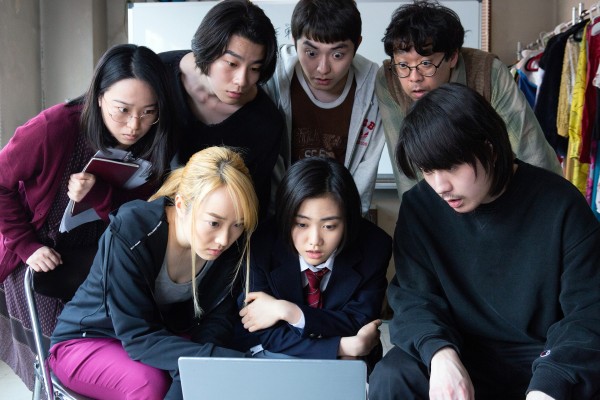
SOME OF THE CAST OF SPECIAL ACTORS
Siblings and simulations
Kazuto (Kazuto Osawa) is a lonely loser, owing rent on his little flat and failing in acting class due to emotional weakness: he faints whenever he feels stressed, which is almost constantly. Squeezing a "boob" hand exerciser helps only a little; he gets likewise little help from constantly watching an old videotape of a crude dubbed TV show called "Rescueman." Then Kazuto runs into his younger brother Hiroki (Hiroki Kono), from whom he's been estranged for the five years since their parents died. The handsome, confident Hiroki was supposed to be starting his own company but he too is a thespian of a sort. The "Special Actors" team to which he takes Kazuto offers actors for hire to tweak or simulate situations on request of paying customers, to alter situations. They can, say, provide a "thief" a boyfriend can "subdue" to impress his girlfriend.
Kazuto starts easy - crying at some relative's wake, laughing at somebody's comedy show. Then a more challenging and more lucrative job comes along that requires the participation of the entire Special Actors team. A girl offers her entire savings for them to shake up a crooked pseudo-religious cult called Musubiru that has charmed her sister and is about to take over the country inn they inherited from their parents. They must infiltrate the cult and expose it so the sister will leave the cult and hold onto the inn.
This project occupies most of the rest of the movie. In fact, the opening credits don't come till 25 minutes in, a sign of Ueda's characteristically sly, self-reflective approach in Special Actors which, though smoother and more conventional (and perhaps more heartwarming?) than his famous first
feature, likewise relies on the comedy of clumsiness, on the "real" effect of an illusion that's inadequate. Aren't bad actors the best people to play (real) bad actors? That's his assumption, anyway.
The Musubiru cult winds up being a crude but memorably nightmarish version of charlatans exploiting the gullible whose "secret plan" the actors capture and expose. It's hard to forget the zillion-year-old "leader", a tall, "mute" boy with permed hair; the shrill shills in suits; the cheap souvenir gizmos sold for outrageous prices; the odd hand gesture of cult greeting, and the rest. Even if the scenes lag a bit in the middle, Ueda shows the same penchant for raucous, chaotic action he used so well in his first film.
Burt of course though Special Actors is both entertaining and ingenious, it arrives with an impossible act to follow - Ueda's 2017 hilarious surprise hit debut One Cut of the Dead (whose Japanese title means "Don't Stop the Camera!"), which famously made something like a thousand times what it cost to make, having been a runaway hit in 250 theaters in Japan and earned $30 million abroad on a $25,000 investment. So we have sophomore blues with Special Actors and no, it's not as brilliant or as outrageously fun as One Cut of the Dead.
But some have been overly disappointed, like James Hadfield in Japan Times. I don't think as some do that the surprise ending is obvious; on the contrary, the deception-within-deception effect is quite trippy - even if this movie may be a tad more interesting to think about than to watch. The whole theme of using amateurish actors for "useful" deceptions in real life is wonderful.
It's also fun as one can learn in detail from the Japanese Wikipedia article on this film that the Ueda's screenplay development involved extensive workshopping with all the 15 core cast members involved plus several more, incorporating the actors' ideas and personalities more deeply into the action. Those cast members included people who'd acted three times in ten years (Kazuto Osawa, the bedraggled "lead"), other's who had not yet acted, still another who was just an office worker who was a big fan of One Cut of the Dead. The tendency to pass out under stress - almost anyway - was taken from the young (36-year-old) Ueda's own reported experience.
Opening Film. Live Q&A with director Shinichiro Ueda scheduled for July 17 at 9 pm (ET).
As mentioned I've used the Japanese Wikipedia article as a source using DeepL and found it quite helpful; it's hard to find a cast list elsewhere. There are numerous reviews in English listed on IMDb (see allso Letterboxd).
Special Actors109 mins., premiered in Japan September 25, 2019 and [I think] debuted at Rotterdam Oct. 2019. Opening night film for the all-online New York Japan Cuts 2020, via which it was screened for this review.
Last edited by Chris Knipp; 07-24-2020 at 03:06 PM.
-
ON-GAKU: OUR SOUND (Kenji Iwaisawa 2019)
KENJI IWAISAWA: ON-GAKU: OUR SOUND (2019)
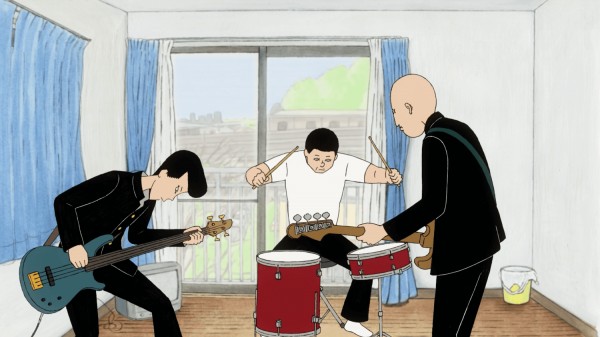
Noise rock
Kenji Iwaisawa's feature debut is an offbeat one-hour animated film that adapts Hiroyuki Ohashi's manga about some aimless high school delinquents who find, momentarily anyway, a sense of purpose in forming a three-man rock band. It's primal. He teases us with the minimalism of these guys who are ageless and almost faceless and are monosyllabic and sometimes just sit there silent. Kenji (voiced by former Yura Yura Teikoku frontman Shintaro Sakamoto) is the leader of sidekicks Ota (Tomoya Maeno) and Asakura (Tateto Serizawa). There are some skinheads who hate but fear Kenji. When they meet, it's at a "comic cafe."
They make a mistake, and wind up with two bass guitars, accompanied by drums. They do not know how to play. That has not gotten in the way of some rock bands. I am indebted to the enthusiastic review by James Hadfield in Japan Times ("an instant classic"; "seven years in the making") for details such as the explanation why the band's choice of name is a problem. They pick "Kobujutsu" (classical martial arts) and the school already has a "Kobijutsu" (classical arts). Kenji tries to stare down the leader of Kobijutsu and make her change their name.
The "music" of Kobujusu just sounds like noise. That is, the climactic concert. Morita (actress Kami Hiraiwa), the director of Kobijutsu, invites Kobujutsu to participate in what's reportedly one of the first rock festivals in Japan. They agree.
In the event, there are surprises, first of all in the instrument Kenji shows up with - and his showing up in itself is a surprise, since he has declared himself "bored" with the band after a preparatory recording playback on a tiny Walkman displeases himi, and walked away. Then, there is the participation of a musician from another band with much greater skill. The mix of odd, primal, and skillful makes for the kind of cosmic explosion that is needed to make this story turn from deadpan to almost exultant. Yes, this is an unusual film. Hadfield says it's all hand-drawn, a reason for the long time in preparation; also as he oints out there's some use of rotoscoping in the final performance sequence to make the moment come alive.
On-Gaku: Our Sound, 71 mins., debuted at Ottawa Oct. 2019; several other festivals. Limited theatrical release in Japan Jan. 20220. Secreened for this review as part of Japan Cuts, New York, July 2020.
Last edited by Chris Knipp; 07-25-2020 at 10:45 PM.
-
IT FEELS SO GOOD (Haruhiko Arai 2019)
HARUHITO ARAI: IT FEELS SO GOOD 火口のふたり (2019)
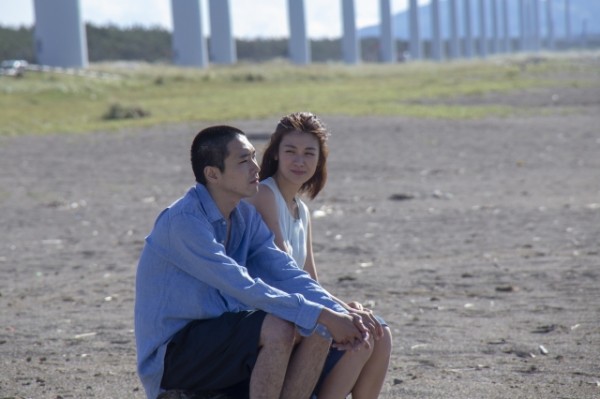
TASUMI EMOTO AND KUMI TAKIUCHI IN IT FEELS SO GOOD
A feast of sensuality and self discovery
Terrible English title aside (the Japanese film's name is "Two at the Crater"), this new feature by Haruhiko Arai based on the prize-winning novel of Kazufumi Shiraishi is fresh, original, and jaw-droppingly sexy. It's a two-hander, a lot of its success inevitably hence owed to Kumi Takiuchi as the woman, Naoko, and Tasuku Emoto as Kenji, the boy (now grown up, some, and divorced) with whom she had an intense sexual affair when they were very young. Naoko is about to marry a Self-Defense Forces colonel who's still away working. She's back in her hometown, Akita, for the wedding and finds Ken is back for the event at the house of his late mother, which is unused. What she proposes as a last 24-hour fling, despite his strong initial resistance morphs seamlessly into a five-day marathon.
And boy do they get it on. James Hadfield of The Japan Times describes this aspect well. He points out Arai, a screenwriting vet on his third directorial outing, was "seldom coy" about sex, but this time is so enthusiastic it "harks back" to his "earliest work" on "sofcore Nikkatsu Roman films." As he points out, "beds, baths and kitchen tables aren't safe and on a road trip they even "manage to get off" while "staying on a bus." But the conversation in between becomes as Bergmanianly intense and searching as the sex. There is something exhilarating about this fluent, elemental orgy of physicality and honesty, even if the ending, which feels over-thought, loses much of the conviction and zing of what's gone before and would have been better ruthlessly shortened.
At its best the film is relaxed and natural, as sex should be, and as the two leads are. Kumi Takiuchi and Tasuku Emoto aren't like porn stars or glamour-pusses. They're fit, lean, and ready. more like dancers or athletes. They're loose, at ease in their bodies and at ease with each other's bodies. The best action part is the early sequence where they move together from house to car to ramen shop as they get reacquainted and he resists. He plays this well and the attention is on him. The weakness is that the dialogue here is so blatantly expository. A set of arty black and white photos of the couple way back when isn't very convincing. Here and there, the score could have gone lighter on the strings. A shot of the pair now naked side by side on a bed looking out a window is classic.
They work out so hard at first there's abrasion and his penis requires a cold compress. He hasn't had sex with anyone for a while. He wasn't married long, and lost visitation rights to his six-year-old daughter. And he is out of work, only working part time. Over this hovers the disaster of 3/11 and another potential disaster disrupting Japanese lives and incomes.
The physical part of the story continues apace, and it rarely loses momentum or credibility. But the mental part, what we're offered to think about, is in the conversation in between. The sensuality is carried over into their meals. He cooks dinner for them, and every time looks delicious, though a hamburger dinner she requests makes her sick.
Of course it gradually develops that this happens because their passion was a once-in-a-lifetime thing, and that the groom's purpose is to give her a baby. (It's also a surprise to me to learn far along in the idyll that she hasn't been allowing Ken full penetration; they haven't used contraceptives.) Ken debunks the idea of marriage to have children. She is highly critical of him. She says he's never either had enough ambition nor been willing enough to take help from others.
Well along in their sex idyll, they attend a local night folk festival with lights and costumed figures all in masks. It's both beautiful and scary, and it becomes a nice objective correlative for the state of confusion they're in at this point, a nicely used bit of local color and a good relief from the bedroom-meal-bedroom round.
These chats that are so raw and direct make us wonder where things are going. Hovering over all is a time when he shifted away from her, then called and begged her "Die with me." They went to the edge of Mount Fuji volcano. The image of the mouth of the volcano is a recurrent one. Naturally this movie isn't about "it feels so good," though it does feel damn good; that just isn't the whole story, and despite its outward sense of happening in a bubble of sensual bliss, it all happens very clearly in a contemporary Japan where there are all kinds of worries.
It's interesting to compare this to Renais' structurally related Hiroshima mon amour, from 1959. It may have seemed wonderful a the time, but Marguerite Duras' dialogue feels pretentious today, and the love-making in the sane, or whatever it was (which Pauline Kael made fun of) is trumped by Arai's. This movie's sex is stylized too - he doesn't show us everything. But what he shows is so explicit, you're there. It's state-of-the art movie sex.
It Feels So Good / 火口のふたり, 115 mins., released in Japan Aug. 2019; in Taiwan Apr. 2020, Hong Kong May 2020. Screened for this review as part of this year's all online Japan Cuts (New York Jul. 2020).

KUMI TAKIUCHI AND TASUMI EMOTO IN IT FEELS SO GOOD
Last edited by Chris Knipp; 08-07-2020 at 09:21 PM.
-
BEYOND THE NIGHT ( Natsuki Nakagawa 2019)
[NEXT GENERATION Section.]
NATSUKI NAKAGAWA: BEYOND THE NIGHT (2019)
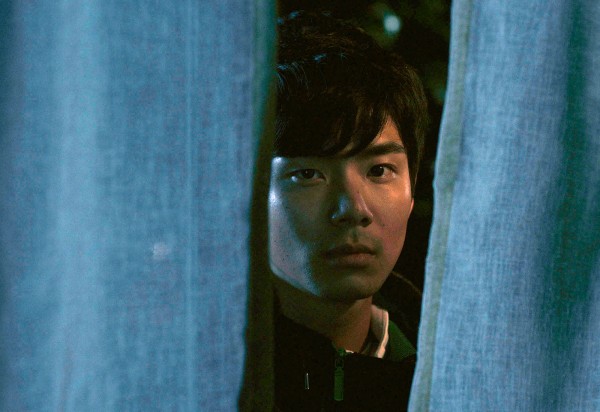
KENTA YAMAGISHI IN BEYOND THE NIGHT
Brooding and murder in the country: 'Hedda Gabbler' in the style of Robert Bresson
Nakagawa’s graduation film from the Department of Body Expression and Cinematic Arts at Rikkyo University, She Is Alone, won the SKIP City Award at the Skip City D-Cinema International Film Festival 2018. Beyond the Night was produced in Tokyo University of the Arts’ Graduate School of Film and New Media, Department of Film Production.
In this new film, Toyama Mikiro (Kenta Yamagishi) is a strange young man who goes to the country from Tokyo to avenge the older sister of his girlfriend, Saori. He kills a man called Ishikawa, though we don't see him do it and he doesn't seem to get caught. Along the way he falls for the dreamy, strange Sotoko (Saki Tanaka), who's in an abusive relationship with Atsuya (Yasuhiro Isobe), who's also strange. Toyama seems drawn to Sotoko and gradually she is drawn to him, but she can't give up being with Atsuya. Back in Tokyo off and on, Toyama sees Saori, who when she learns what he has done calls him a "creep" and wants noting to do with him. Sotoko gets Toyama beaten up. He gives her a ring related to his girlfriend to throw away. She tosses it in the river.
The film, which is so stylized it seems stilted (is Nakagawa a fan of Bresson or Eugène Green?), plays with archetypes. The name "Sotoko" alludes to "beyond" or "outside," and there is a constant contrast between the country and the city, though Toyama tells Saori, with the air of having made a discovery, that there are bad people everywhere. (He seems to think there is even more corruption in the country.) Sotoko tells an office mate who wants to move to Tokyo that if she does she'll just do the same things there. A detective tells Sotoko more or less the same thing.
The festival blurb says the " encounter" between Sotoko and the boy from the city introduces "an eroticism with a violent edge" that threatens to "slash apart her toxic marriage" with "the abusive Atsuya" and his "web of small town corruption". However (it goes on) "Nakagawa renders this pulpy premise in deadpan realism." Perhaps the premise is "pulpy." But the language of the blurb, which says the film "pierces the uncanny surface of physical reality" to access "the turmoil of humans' inner desires," is pulpier than the movie, which is very, very far from "deadpan realism," though deadpan it is. What is true is that the film is "structured" (bracketed) "with repeated scenes in a moonlit forest," and Sotoko is seen lurking there.
With cinema in this style, actors aren't expected to act; hence Bresson called his non-actor cast members "models." For the most part Yamagishi and Tanaka just have to look pretty and broody and speak their lines in a deadpan manner, yet with a certain conviction that they're not just being ridiculous. Key action is filmed in the forest mainly because the director doesn't want to stage it in real time and space. Sotoko is a neurotic wife somewhat in the tradition of Hedda Gabler, a woman who cannot be happy and drives men crazy. But Nakagawa's world, unlike Ibsen's, is drained of social reality. This is not a fully realized film or one likely to appeal to most people. Perhaps Nakagawa will do better next time.
Beyond the Night, 93 mins., was screened for this review in the Next Generation section of the all virtual 2020 Japan Cuts festival.
Last edited by Chris Knipp; 07-28-2020 at 06:14 PM.
-
FUKUSHIMA 50 (Setsurō Wakamatsu, 2020)
SETSURÔ WAKAMATSU: FUKUSHIMA 50/ フクシマ50 (2020)
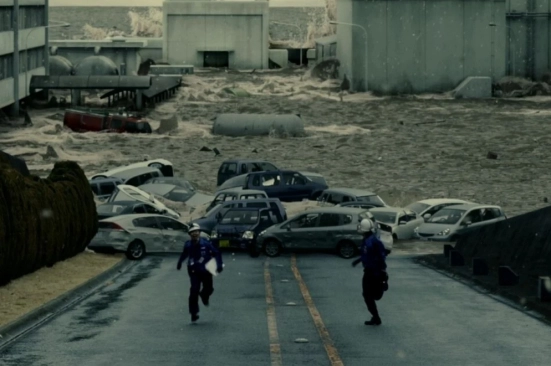
STILL FROM FUKUSHIMA 50
Good but not great film about the Japanese nuclear disaster
This is the first big budget, big name film about Japan's 2011 earthquake and Fukushima Daiichi nuclear disaster. It stars Ken Watanabe and Koichi Sato and has plenty of excitement. But as more than one commentator has noted, it "lacks nuance" and is timid ("earnest, if somewhat toothless," said James Marsh in SCMP being unwilling to point accusing fingers for something that like the other big ones, Three Mile Island and Chernobyl (the latter having its own superb for-television mini-series), were rife with human error. As Anthony Kao has written in Cinema Escapist, its timidity about responsibility will probably mean this film won't ever get the international audience the dramatically more sophisticated Chernobyl mini-series received. But that doesn't keep it from being "immensely valuable" and "intriguing' from the historical point of view. But artistically this reads as lightweight compared to the superb miniseries by Craig Mazin, Chernobyl.
The focus is on the nuclear plant workers who remained - initially fifty, hence the title - to minimize the damage. The main source is a 2012 book by Ryusho Kadota commpiliing ninety interviews with all levels from basic plant workers to PM Naoto Kan, and depicts a race against time to minimize escape of radiation while the team was able.
A reflection of the reticence is that all the workers are fictional, including shift supervisor Toshio Izaki (Koichi Sato). One exception is Masao Yoshida (Ken Watanabe), the impressively down-to-earth and energetic site superintendent and emergency response team leader. Mark Shilling, the veteran Japan Times reviewer, says Yoshida was "too famous to fictionalize" because he was the public face of the response team even internationally. The original of Izaki also passed away seven years ago from a cancer judged to be of other origins, and a memorial to him is built into this film.
This film doesn't point fingers, and is framed in shades of gray. But it has its dramatic high point; Yoshida's decision to go against the instructions of Tokyo Electric Power Company (TEPCO) officials to stop cooling the damaged reactors with sea water because they feared the equipment would be ruined. If he hadn't continued to cool the reactors the center of the country would have become uninhabitable. TEPCO is a pushover compared to the fearsome opponent represented by the Soviet Union''s Central Committee in Chernobyl. But at least Wakamatsu's film makes no bones about the profit-first focus of TEPCO in the face of a massive human disaster. The film also isn't afraid to show how confused and panicked the rank and file workers were when confronted by the chaotic events surrounding them.
The film also does a good job of depicting the initial earthquake and then the resulting tsunami that washed over the power plant's coastal defense walls flooding the main structures and knocking out the backup generators required to cool the reactor cores. It also fills in some US responses both bad and good - the callous reaction from the Obama administration; the admirable humanitarian relief effort mounted by an American air force general.
What I remember of the Chernobyl mini-series are the relationships between people, though: the conflicts and altering power structure as events were referred to higher up and the prolonged disaster action action was carried out. Not the rush of action so much as the long slow creepy sense of danger from radiation. Not sure there is quite an equivalent here for all that. Perspective is provided here of responses at the Prime Minister's office and a US military base. (Notably, the PM's helicoptering over the Fukushima station caused a delay in the recovery operation.) But the quality of the writing is less impressive than the sense of reproducing the event and its army of brave men of action, "valiant warriors," as Anthony Kao calls them.
The Japanese and the Soviets may have something in common besides having hosted the two worst nuclear disasters - level seven on the International Nuclear Event Scale: having a culture of unwillingness to find anyone responsible.
Fukushima 50 / フクシマ , 122 mins., opened Mar. 6 in Japan, in June in Vietnam and Hong Kong. In July it had internet release in Poland, DVD and Blu-ray in the Netherlands. In the US it has internet release as part of the July 17-30, 2020 Japan Cuts, for which it screened for this review.
Last edited by Chris Knipp; 07-26-2020 at 06:05 PM.
-
THE MURDERS OF OISO ( Takuya Misawa 2019)
TAKUYA MISAWA: THE MURDERS OF OISO /ある殺人、落葉のころに (2019)
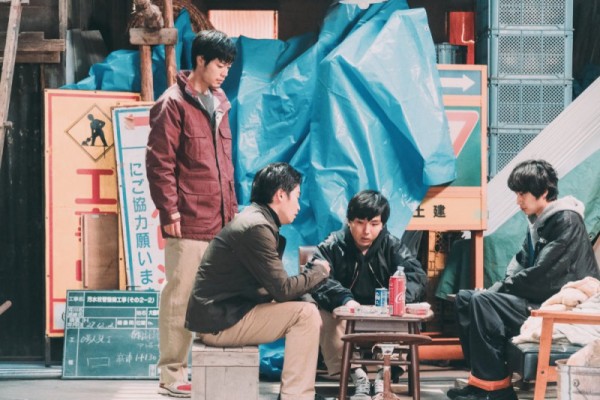
TRAILER
With a friend like Kazuya. . . a stylish slow-burner
The Murders of Oiso is actually the Japan-set collaboration of three 2015 alumni of the Busan Festival's Asian Film Academy, Takuya Misawa, Fei Pang Wong and Cyrus Tang, with Misawa in charge and working with a Hong Kong film crew including cinematographer Timliu Liu.. It's a slow-burner character study that's at once very Japanese and reminiscent of a 19th-century long short story. In cinematic terms the collaborators could have been thinking of Hou Hsiau-hsien's classic The Boys from Fengkuei, or equally of Fellini's thirty-years-earlier I Vitelloni. (In an interview he mentions only wanting to express, obliquely, social and gender issues.)
The look of the film, with its wide aspect ratio, autumnal colors, and yellow filters, is quite distinctive and appealing - and delicately distancing, appropriately because all this is as recollected, sketched in words on paper, by a woman involved and Misawa himself. The opening shots are of boys in gymn class, figures moving back and forth intentionally paralleled to flocks of birds. The cutting skips gleefully from one location to another and the camera cuts off some identifying features, both camerawork and editing at times willfully withholding in style, declaring the inbred nature of the action.
This version of dissolute young men revolves around three slacker locals, Shun (Shun (Koji Moriya), Tomoki (Haya Nakazaki), and Eita (Shugo Nagashima) who work for a construction company and hang out with the evidently obnoxious Kazuya (Yusaku Mori), who's their age and drinks and smokes and plays cards with them yet has ceased to consider himself their equal because, while impecunious at the moment, he will inherit the company. And that comes sooner than expected. The stage is the small coastal town, Shonan, Oiso in Kanagawa Prefecture. They all live where they were born and raised, but their friendship is altered by the death of their basketball coach at school, who is Kazuya's uncle, and is found dead. Shun is attracted to Senri, the widow of his teacher. Tomoki shows a relentless commitment to Shun's behavior. Kazuya decides to break the law because he needs to raise money for his family. he tall, shaggy-haired Eita seems to owe some kind of debt to Kazuya. The presence of Eita's girlfriend, Saki (Ena Koshino), puts the others continually ill at ease, particularly Kazuya.
Eventually on a long night of drinking in the storage space where the boys hang out, Eita unwittingly puts his fiancee at risk with Kazuya. And that is when all the tension and unease become intense. Family and friends, the intimate relationships that have been build up are flipped; awareness of the outside world has made everything unnatural now. At the end of the story, it seems as if the curtain is falling on a tragedy.
As online critic Selina Lee bluntly puts it, Murders of Oiso is a story of "pent-up aggression "and "toxic masculine friendship." The vitelloni-style idleness is made confusing by the fact that they're working, but all the focus is on the hanging-out and nearly meaningless chatter - despite sketching in of all kinds of events in the larger local world. The action's main space is always the small, garage-like storage space with a pull-down corrugated door where one of the boys, Tomoko, sleeps and the others come to hang out.
Lee further notes that throughout the film "bodies are found" and "family secrets are revealed" but "in Misawa's controlled hand" these events that might normally be considered "major plot points" (of a noirish nature) are "greeted with impassive shrugs." And the visual is never forgotten, as a sense of aesthetic detachment: there are "frequent shots of verdant ginko leaves, radiating sunshine" (with much emphasis in suites of images upon yellow objects), and "breaking waves" that "bear witness to everything that's concealed from the audience."
The way the apparent tragedy is resolved is rather facile (the title is a tease), and the film leaves a tad too many lacunae. But along with the youthfulness of the filmmaking there is a keen sense of the visual, a feeling for tense small town claustrophobia, and a play with character that's interesting in the way it considers the interplay of class and personality.
In an interview Misawa admits he's uncertain if the audience will get what he was trying to do in The Murders of Oiso. But one feels the filmmaker's passion, enhanced by the skillful Hong Kong crew and the restrained score performed by Eiji Iwamoto, which are pro all the way.
The Murders of Oiso, 79 mins., debuted at Busan Oct. 2019, also showed at South Taiwan, two Hong Kong festivals, and Osaka. Theatrical release in Hong Kong in June 2020. Screened for this review as part of the all-online pandemic 2020 edition of New York Japan Cuts.
Last edited by Chris Knipp; 07-27-2020 at 05:38 PM.
-
LIFE: UNTITLED タイトル、拒絶 (Kana Yamada 2019)
KANA YAMADA: LIFE: UNTITLED タイトル、拒絶 (2019)
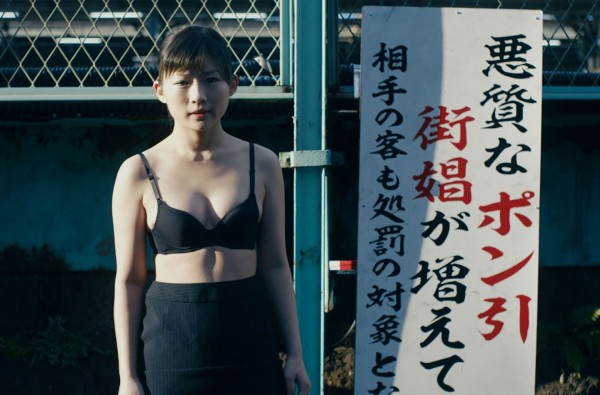
Life in a call girl HQ
This feature about life surrounding a contemporary Tokyo dispatching headquarters for call girls may be contrasted, sharply, with Bertrand Bonello's moody, decadent Apollonide, about a sad but grand and beautiful Paris brothel at the end of the 19th century when they were in grand decline. This environment is cheerful, energetic, but makeshift, giddily energetic yet depressing.
The apartment's just a jumble, and the operation seems haphazard. Who's in charge? Yamada has trouble presenting this as a working business. But then prostitution is a funny kind of business, isn't it? In the first scene (after the one introducing the voice of the piece, Kano (Sairi Ito), who's too outspoken to be a sex worker but stays on as a dispatcher and wrangler) we see that three of the girls get fed up and take off for the day in the middle of the afternoon, leaving Kano in a potential bind. Before that, they were laughing riotously. They like to joke about the absurd behavior of the johns. One young woman, a self-declared "slut" from childhood, is so emotionally damaged she giggles all the time, and obsessively watches TV.
LIfe: Untitled is adapted from a play, the director's, and it shows in the restriction of most of the action to one big room, to the sharply contrasted personality types and the "dramatic" events, though with no overriding plot-line discernible. As in Apollonide, there is a plethora of characters and one spends the movie trying to get them all straight. In a blatantly stagey moment, a girl with glasses who's always scribbling in a notebook gets a call from her mother that her father has died in a hospital, and precipitously goes off on leave.
There is Riyu (Tomoko Nozaki), the top call girl, who says everybody here is a failure in society. Mahiru (Yuri Tsunematsu) is so in demand, an older woman, Shiho (Reiko Kataoka), is substituted. Atsuko (Aimi Satsukawa) is full of anger or hysteria in her every line. There are several men. The bleach-haired Ryota (Syunsuke Tanaka, who overacts horribly), is the self-hating driver. He has had sex when they were both drunk with the pathetic Kyoko (Kokoro Morita), who thinks this means love and has knitted him a gaudy scarf, and he yells and whines at her: a marriage made in heaven. In charge is Yamashita, who, like Ryota, has had sex with the girls, sometimes for pay, sometimes for free, and regrets it. He runs the business for an old man, Denden. They talk of moving this HQ to a new and better location. Hagio is another male employee, with little screen time, a call boy.
One reviewer says Yamada's women all "take their particular kinds of revenge against a misogynistic and oppressive society ruled by male violence." Really? Mostly this world just seems hysterical, chaotic, and full of drama queens - of both sexes. Another, wiser review says "Life: Untitled is an explosive chamber piece of psychological deterioration.." That's true enough. But if only the psychological deterioration were not so obviously play-acting. Josh, on Letterboxd, accurately says, "This movie needs to take it down several notches.."
Life: Untitled タイトル、拒絶, 97 mins. premiered Oct. 2019 at Tokyo.
It was screened for this review as part of the 2020 all online New York Japan Cuts.
Last edited by Chris Knipp; 07-27-2020 at 10:18 PM.
 Posting Permissions
Posting Permissions
- You may not post new threads
- You may not post replies
- You may not post attachments
- You may not edit your posts
-
Forum Rules





 Reply With Quote
Reply With Quote







Bookmarks